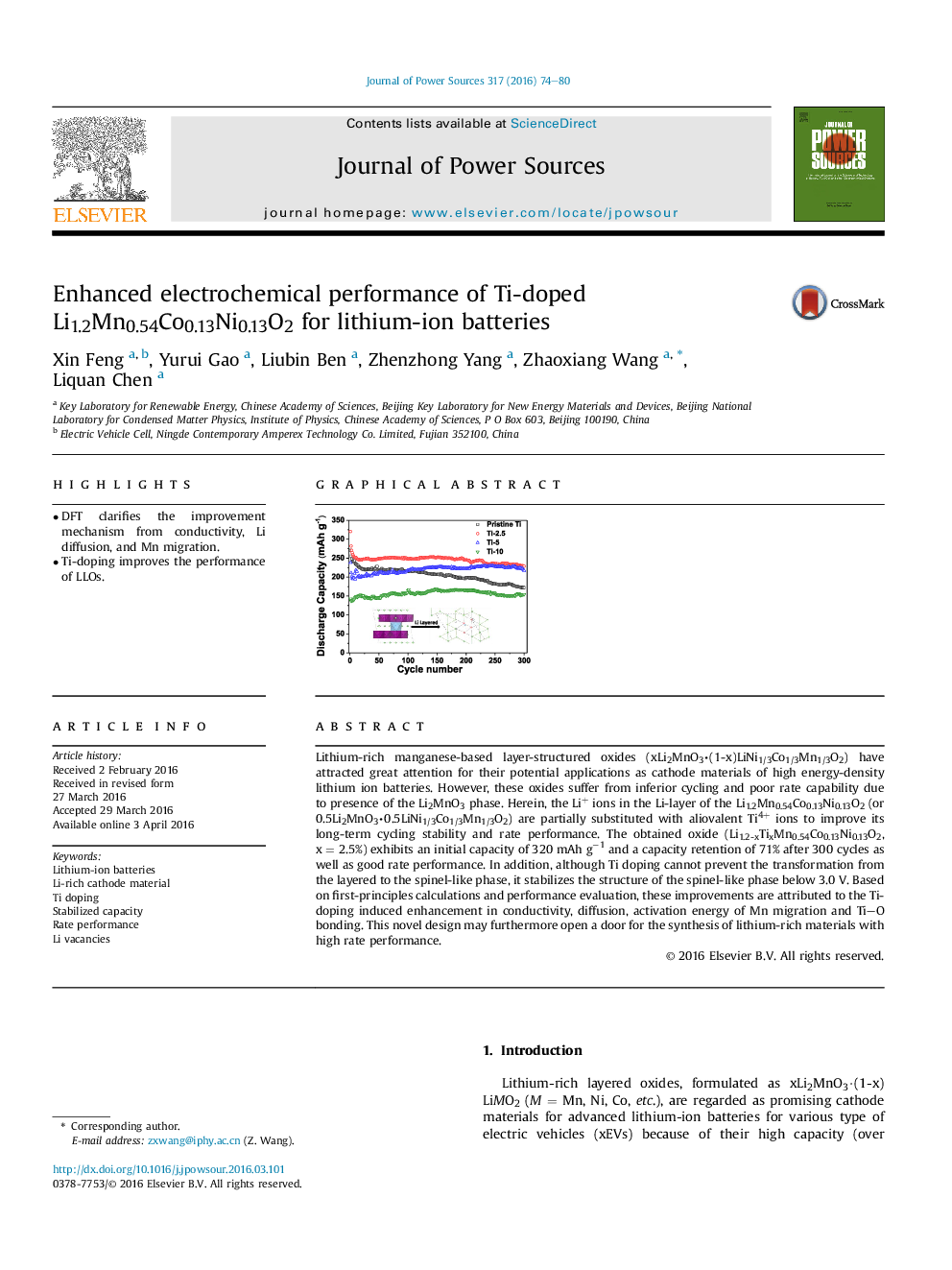| Article ID | Journal | Published Year | Pages | File Type |
|---|---|---|---|---|
| 1286140 | Journal of Power Sources | 2016 | 7 Pages |
•DFT clarifies the improvement mechanism from conductivity, Li diffusion, and Mn migration.•Ti-doping improves the performance of LLOs.
Lithium-rich manganese-based layer-structured oxides (xLi2MnO3⋅(1-x)LiNi1/3Co1/3Mn1/3O2) have attracted great attention for their potential applications as cathode materials of high energy-density lithium ion batteries. However, these oxides suffer from inferior cycling and poor rate capability due to presence of the Li2MnO3 phase. Herein, the Li+ ions in the Li-layer of the Li1.2Mn0.54Co0.13Ni0.13O2 (or 0.5Li2MnO3⋅0.5LiNi1/3Co1/3Mn1/3O2) are partially substituted with aliovalent Ti4+ ions to improve its long-term cycling stability and rate performance. The obtained oxide (Li1.2-xTixMn0.54Co0.13Ni0.13O2, x = 2.5%) exhibits an initial capacity of 320 mAh g−1 and a capacity retention of 71% after 300 cycles as well as good rate performance. In addition, although Ti doping cannot prevent the transformation from the layered to the spinel-like phase, it stabilizes the structure of the spinel-like phase below 3.0 V. Based on first-principles calculations and performance evaluation, these improvements are attributed to the Ti-doping induced enhancement in conductivity, diffusion, activation energy of Mn migration and TiO bonding. This novel design may furthermore open a door for the synthesis of lithium-rich materials with high rate performance.
Graphical abstractFigure optionsDownload full-size imageDownload as PowerPoint slide
